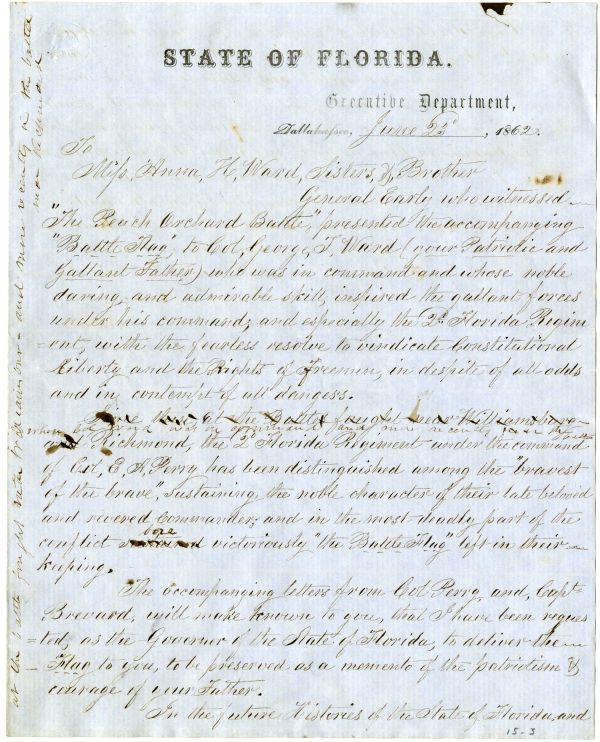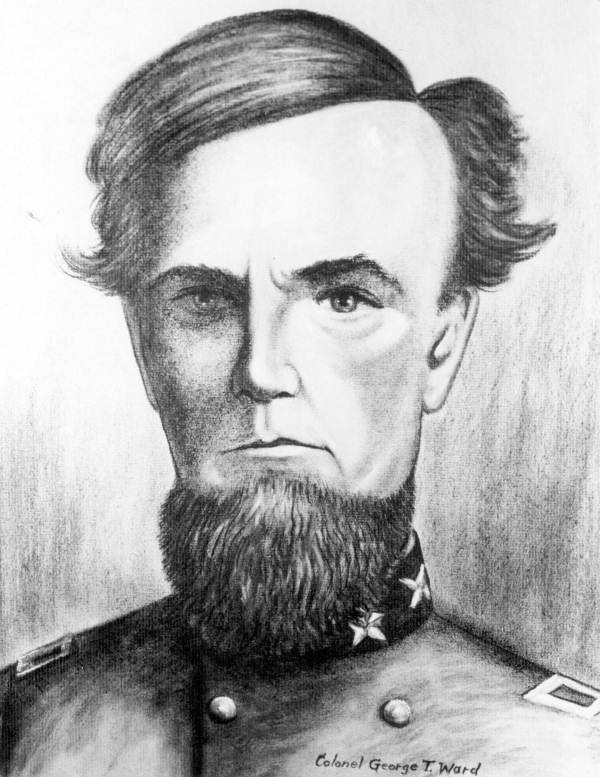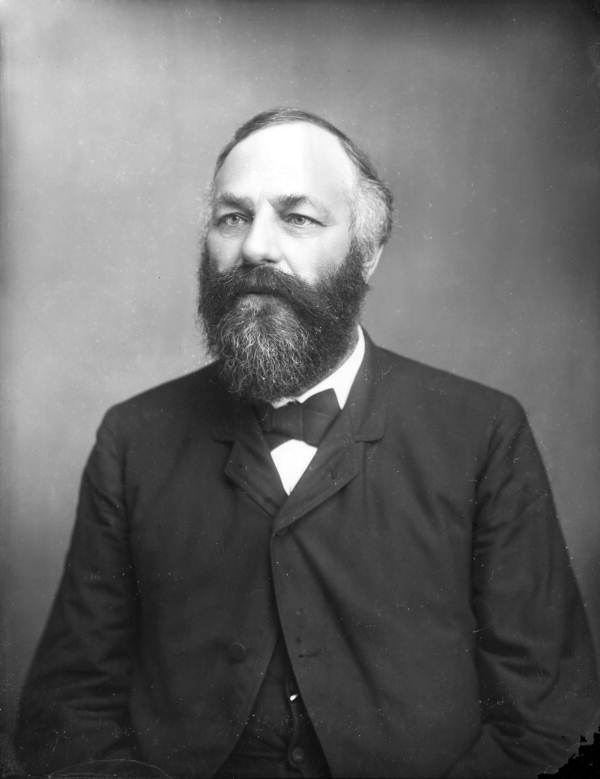Description of previous item
Description of next item
The Second Florida Infantry Regiment During the Civil War
Published June 6, 2012 by Florida Memory
The Confederate experiment seemed doomed in the spring of 1862. On the Mississippi River, Union forces occupied New Orleans and launched a drive to wrest control of the river from the Rebels.
In the East, the plodding Peninsula campaign of General George B. McClellan’s Army of the Potomac finally reached the outskirts of Richmond at the end of May amidst rumors that the Confederate government was ready to evacuate their capital.
On May 31, however, the Rebels struck back. General Joseph E. Johnston’s Confederate army attacked McClellan’s forces at the crossroads of Seven Pines village east of Richmond. Although Johnston’s force outnumbered the Federals, he had devised a far too complex plan of battle, which resulted in a series of uncoordinated and costly attacks against determined Union resistance.
The fighting continued into the morning of June 1 and ended with the Confederates withdrawing from the battle after failing to break Union lines. While the immediate result of the battle was inconclusive, there were two important consequences.
Seven Pines ended the Union advance on Richmond. Shaken by the battle, the overly cautious McClellan directed his army to assume defensive positions in expectation of further Confederate attacks.
More importantly, General Johnston was seriously wounded near the end of the first day’s fighting and had to relinquish command. His eventual replacement was General Robert E. Lee, who reorganized the Army of Northern Virginia and began a series of relentless attacks known as the Seven Days Battles (June 25-July 1) which forced the retreat of the Army of the Potomac from Richmond.

Page 1 of of a letter presenting a Confederate battle flag to the family of Colonel George T. Ward, 1862
Florida troops of the Second Florida Infantry Regiment fought at Seven Pines and during the Seven Days. Consisting of 11 volunteer companies from counties across Florida, the Second Florida first saw action on May 3, 1862, outside of Yorktown, Virginia.
Two days later, the Second Florida formed part of the Confederate right flank during the Battle of Williamsburg, where they launched an impetuous charge against Union troops deployed in thick woods. Colonel George T. Ward of Leon County, the Second Florida’s commander and a prominent opponent of his state’s secession, was killed in the attack along with several other men from the regiment.

Portrait of Confederate Colonel George T. Ward, 1838
According to the recently passed Conscript Act, soldiers already in service were allowed to elect their officers. A week after Ward’s death, the men of the Second Florida elected Edward A. Perry, the captain of Company A, to command the regiment as its new colonel.
Perry led the regiment into battle at Seven Pines, where it sustained heavy casualties as a result of an assault against a Union artillery battery. The Floridians overran the battery and even captured the unit’s standard, but the price was appalling: Of the 435 men who went into battle, 198 were either killed or wounded, including 10 out of the 11 company commanders.
During the Seven Days Battles, the Second Florida fought in two of the seven engagements: Gaines Mill (June 27) and Frayser’s Farm or Glendale (June 30). The regiment, which began the campaign with only 300 men, suffered 137 casualties in the two battles.
One of the casualties was Colonel Perry, who was severely wounded at Frayser’s Farm. Perry recovered, however, and went on to command a brigade of Florida troops consisting of the Second, Fifth and Eighth Florida infantry regiments.

Governor Edward Aylsworth Perry, ca. 1885
Forced to retire from active duty as a result of a wound sustained during the Battle of the Wilderness on May 5, 1864, Perry ended the war as a brigadier general and went on to serve as Florida’s 14th governor from 1885-1889.
The history of the Second Florida and Perry’s Florida brigade is covered in detail in A Small but Spartan Band: The Florida Brigade in Lee’s Army of Northern Virginia by Zack C. Waters and James C. Edmonds (University of Alabama Press, 2010).
Cite This Article
Chicago Manual of Style
(17th Edition)Florida Memory. "The Second Florida Infantry Regiment During the Civil War." Floridiana, 2012. https://www.floridamemory.com/items/show/254132.
MLA
(9th Edition)Florida Memory. "The Second Florida Infantry Regiment During the Civil War." Floridiana, 2012, https://www.floridamemory.com/items/show/254132. Accessed August 21, 2025.
APA
(7th Edition)Florida Memory. (2012, June 6). The Second Florida Infantry Regiment During the Civil War. Floridiana. Retrieved from https://www.floridamemory.com/items/show/254132

 Listen: The FolkFolk Program
Listen: The FolkFolk Program